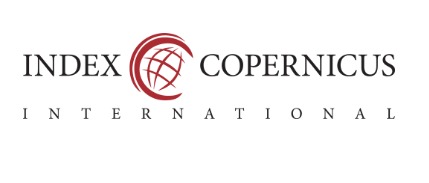The perspective of indigenous culture - A case study of the Truku tribe in East Taiwan
Abstract
Aim: This research aims to find out if and how the Truku people of East Taiwan have managed to keep their traditions alive over time. Methodology Archival research, participant observation, and the use of a SWOT analysis all contribute to the qualitative nature of this investigation.
Findings: The Truku people, it can be said with confidence, serve as a prime illustration of the maturation of both tribal culture and the Seejoq language. The benefits and drawbacks, opportunities, and threats of tourism development for the Truku tribe have all been critically analyzed in this study. It has been discovered that the rituals of the May Bari of Truku can significantly revive the Truku people. Created based on its beliefs and practices.
Implications/Novelty: Our original contribution is that we looked at how tribal pride in their ancestry has changed over time. This research bolsters the case for the widespread acceptance of tribal people into modern society’s networks, where they enjoy the same rights and freedoms as everyone else, not just in isolated communities.
References
Cihung, K. 2011. Improvisation, Transcendence and Ancestral Image: Sacrifice and Rejuvenation of the Truku Ethnic Group Generation performance. Hualien, Taiwan: Classical Bookstore Publishing.
Council of Indigenous People. 2011. “Announcement Aboriginal People Age Ritual Holiday, Culture Inheritance Together.” Retrieved October 31, 2016 (https://goo.gl/yRPdqH).
Hobsbawm, E. J. 1983. “Introduction: Inventing Traditions.” pp. 1-14 in The Invention of Tradition, edited by E. Hobsbawm and T. Ranger. New York, NY: Cambridge University Press.
Hualien County Shiulin Township Office. 2016. May Bari Truku Culture Series of Activities in the Order Book.
Hualien, Taiwan: Hualien County Shiulin Township Office Publishing.
Ji, J. J. 1998. “From Sightseeing Aborigines to Aboriginal Sightseeing.” Presented at Aboriginal Culture and Tourism and Leisure Development Symposium Proceedings, Tapei, Taiwan.
Liu, S. M. 2012. “A Study on the Operation and Development Strategy of Indigenous Tourism Industry: Take Ren-Ai Town as an Example.” Master’s thesis, Institute of Public Administration and Policy, Jinan University, Natou, Taiwan.
Nasser, M. A. 2017. “The Application of Local Productive System (Industrial District) in the Tourism Activities.”International Journal of Humanities, Arts and Social Sciences 3(1): 27-30.
Prentice, R. C. 1994. “Heritage: A Key Sector of the ’New’ Tourism.” pp. 309-324 in Heritage: A Key Sector of The New Tourism, edited by C. P. Cooper and A. Lockwood. Chichester, UK: John Wiley & Sons Ltd.
Sayama, Y. 1983. “Tribal Investigation Report” (translated by Yu, W.). Taipei, Taiwan: Institute of Ethnology, Academia Sinica.
Weng, H. Y., and Yang, C. H. 2016. “Culture Conservation and Regeneration of Traditional Industries Derived by Tourism Factory-Case Study of Kwong Xi Paper Factory in Taiwan.” International Journal of Humanities, Arts and Social Sciences 2(5): 172-180.
Yamaji, K. 1987. “Social Life of Atayal in Taiwan- Habitual Practices, Unclean and Atonement, and Birth and Customs” (translated by Lin, R. B.). Taipei, Taiwan: Institute of Ethnology, Academia Sinica.
Zhang, L. L. 2004. “A Study on the Development of Indigenous Tribes’ Tourism: Taking Coke Tribes as an Example.” Master’s thesis, National Development Institute, Donghua University, Hualien, Taiwan.

This work is licensed under a Creative Commons Attribution-NonCommercial 4.0 International License.












.png)










